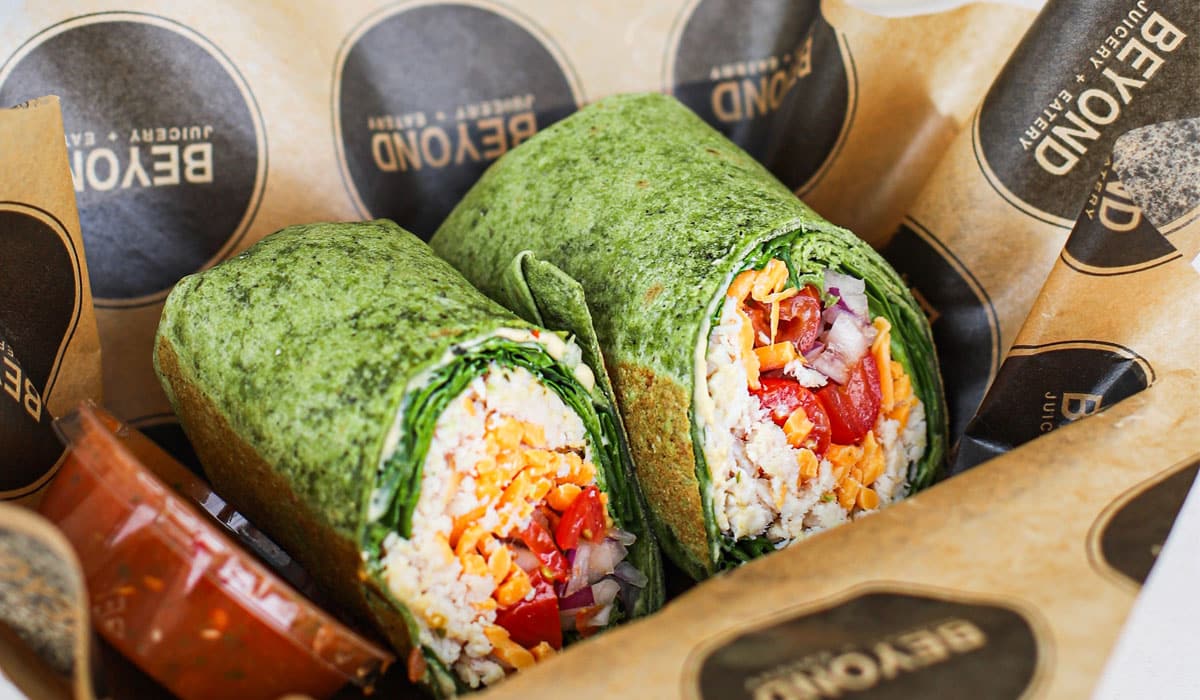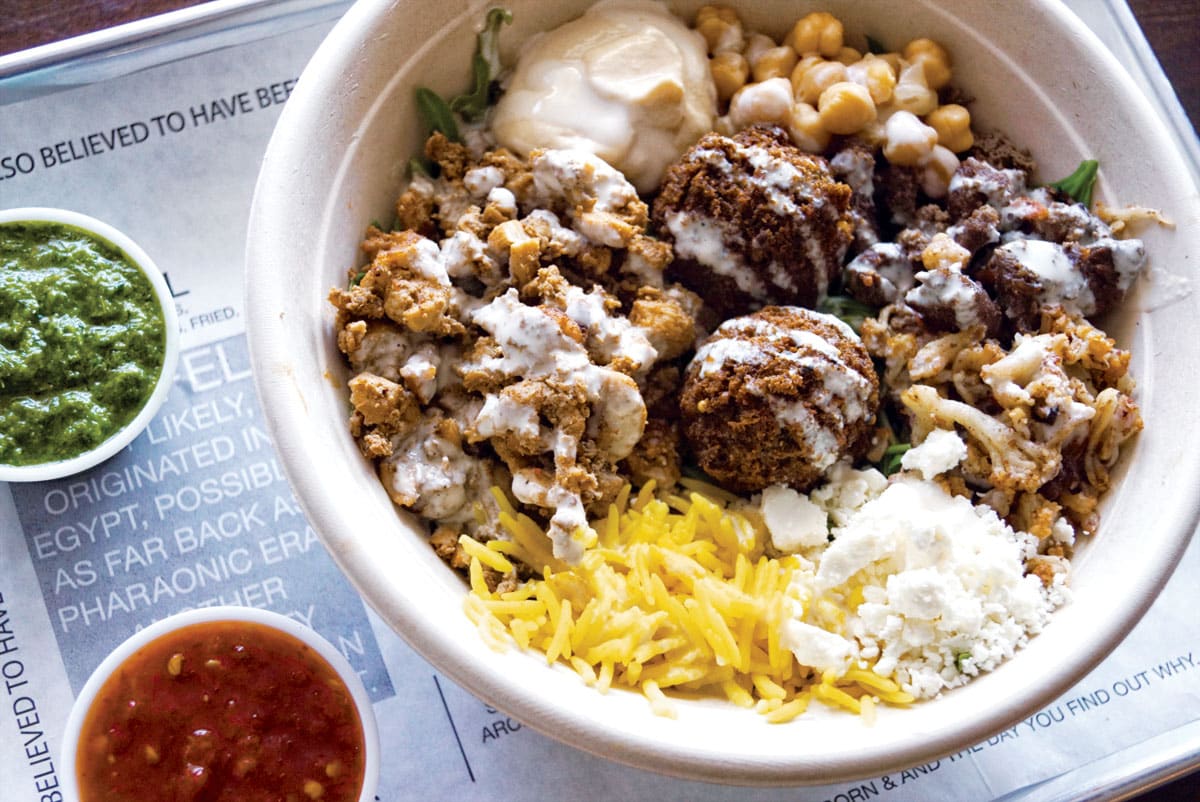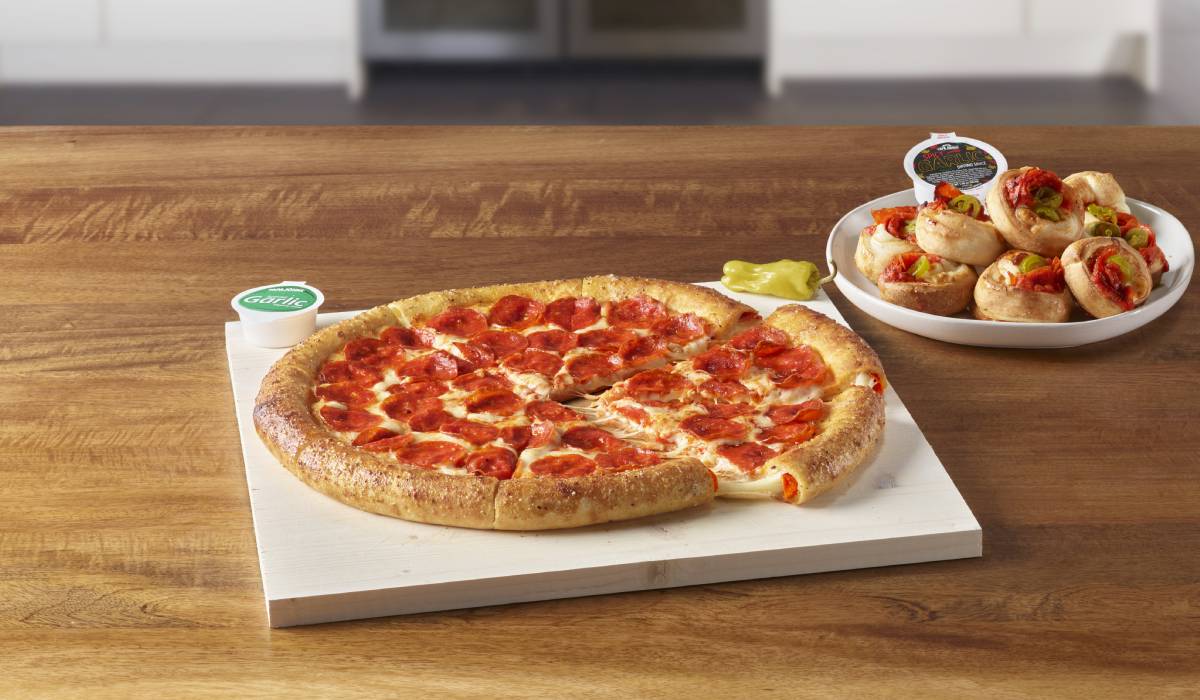Papa Johns CEO Rob Lynch’s fundamental belief is you can’t always measure brand health on the top-line. Comp sales are tricky. External factors bump one direction or the other, and it’s not always reflective of what’s taking shape at the store level. If ever there was a case to prove Lynch’s point, the past two-plus years supplied it.
So instead, Lynch brings Papa Johns’ story back to 2019. The brand opened 79 North America locations and closed 128. The following calendar, it debuted 64 and shuttered 63, inching into the black. In 2021, Papa Johns opened 85 against 35 closures. The growth path, in turn, has progressed from negative 49 to positive one to net unit expansion of 50 over a three-year stretch.
“When franchisees are willing to invest their capital in your brand, for the long term, it means that they’re happy with the returns they’re receiving,” Lynch says in an interview with QSR. “… When you open restaurants that can sustain and stay open—that’s a revenue stream that doesn’t go away, and is dependable and consistent.”
And more telling: Papa Johns evolved from single-digit openings to a guide of 300 in just 24 months. “That’s something that is indicative of the potential of this system for the foreseeable future,” he says.
Papa Johns reported Q1 revenues of $542.7 million, up 6 percent year-over-year, and global systemwide sales of $1.3 billion, which was 5.3 percent higher. Comp sales climbed 1.9 percent in North America against a lap of 26.2 percent in the prior-year period. Despite Lynch’s downplaying of same-store sales as a forerunner of sustained success, the number speaks to a broader point—how Papa Johns has kept growing in light of things it can’t control, like labor volatility and commodity inflation. Pizza Hut’s comps declined 6 percent in its most recent report, year-over-year. Domino’s fell 3.6 percent—its second negative turn in the past three quarters after 41 straight of positive gains.
In both cases, softness through the delivery channel (Domino’s delivery comps declined 10.7 percent) was to blame, or a growing challenge to find drivers and fulfill orders.
Given the context of Papa Johns’ competitive world, Lynch says, “the fact that we were able to deliver positive sales growth on top of 26 percent last year, makes us feel really good that the plan is working.” Papa Johns has outperformed the pizza industry for 10 consecutive quarters.
Before delving deeper, Papa Johns brought major growth projections to investors alongside its earnings. It raised guidance for 2022 net expansion to 280–320 locations from 260–300. Additionally, Papa Johns provided a fresh multi-year target of 6–8 percent annual net unit growth worldwide for fiscal 2023–2025. That equates to 1,400–1,800 net new Papa Johns by year-end 2025, “with vast development whitespace still remaining,” Lynch says.

In Q1, Papa Johns struck a deal with FountainVest Partners to open more than 1,350 locations in China by 2040. It also announced the strategic refinancing of its majority interest in a 90-restaurant joint venture, recording all related assets and liabilities as held for sale as of quarter’s close, to existing franchisee Sun Holdings. The transactions, Papa Johns said, “provide significant operational scale to help accelerate Sun’s current 100-unit development agreement.” That original deal, revealed in late September, represented the largest domestic development agreement in Papa Johns’ history, and with a group that doesn’t wildly toss projections about.
Sun Holdings, founded by Guillermo Perales in 1997, operates more than 1,000 locations in 12 states, including Taco Bueno, Burger King, Arby’s, McAlister’s, IHOP, Popeyes, T-Mobile, GNC, and a number of airport restaurant locations.
Lynch has touted Papa Johns’ runway since his arrival from Arby’s in August 2019, where he led the chain’s transformation into a “Fast-Crafted” brand and 16 straight periods of comps growth as president. On the edge of 2020, Papa Johns had about half as many restaurants as its two largest competitors domestically and roughly a third internationally. The “Big 2” compete in some 100 countries while Papa Johns resided in 48.
As of December 2021, the chain operated in 50 counties and had 3,164 U.S. units. Domino’s boasted 6,560 and Pizza Hut 6,548.
“We are getting huge interest in this brand, from a lot of well-capitalized, sophisticated franchisees,” Lynch says. “And so that’s why we had confidence to take all of our development numbers up. And that’s one of the things that I think really has transformed over the last three years.”
Moving forward, menu plan success
On current trends, Lynch says 2022 has hardly been smooth. All of the 20s, for that matter, continuously created “new environments and dynamics that we weren’t anticipating,” he says.
Where Papa Johns’ strategy held firm, though, is menu innovation, which is another conversation that stretches back a few years.
During Lynch’s first week on the job, he attended a meeting where leadership put a proposal for a significant value strategy on the table. Given the brand’s struggles to that point, it was a redirect some felt necessary to stem market-share bleed (sales dropped 12 percent in 2018, marking the first annual decline in nine years).
Papa Johns tested a $6 platform in several markets and had designs to introduce others throughout the second half of the year, with a possible national launch in 2020.
But Lynch didn’t see the upside. At Arby’s, he had a line he felt rang true here as well. “I told everyone [during my time with Arby’s], I said, we cannot beat McDonald’s by trying to be McDonald’s.”
Now, he asked the room if they thought Papa Johns could best Domino’s by trying to be Domino’s.
Lynch didn’t think so. Instead, he asked executives what was in the innovation tank. In just 2020, the chain launched six new products, pandemic or not—a journey that began with garlic parmesan crust about 90 days after Lynch joined. It marked the first time Papa Johns added to its six-ingredient, never-frozen original pizza dough in company history.

Last January, Papa Johns introduced Epic Stuffed Crust, which helped fuel the company’s 26 percent comp. Key to note, too, is the product ran at $13. This year, Papa Johns is promoting Epic Pepperoni Stuffed Crust at $14. Both are higher than Papa Johns’ average price per pie.
“So they’re not value plays,” Lynch says. “These are premium products that we’re promoting and that’s a very different model than some of our competitors, who promote the absolute lowest price point that they can and tie their advertising to those low price points.”
Amid today’s inflationary puzzle, and a consumer climate of rising prices at- and away-from-the home, it’s a strategy Lynch believes only creates more sensitivity. Also, it’s harder to come off lower price marks and move up. “It’s very transparent,” he says, “and probably has a bigger impact than us moving from a $13 promoted price point to a $14 price point.”
In other terms, Lynch might not have realized it then, before COVID’s rattling of foodservice, but an innovation-first path shielded Papa Johns from what’s taking place today.
The chain has faced some margin dilution (Q1 adjusted operating margins were up sequentially from Q4 to 8.3 percent, but below Papa Johns’ record 9.9 percent margins a year ago), and raised prices about 7 percent, on average, in its corporate stores last quarter to offset inflation in its food basket. Food costs climbed 15 percent in Q1, year-over-year. Add in labor from third-party delivery usage and Papa Johns grappled with about 600 basis points of headwind on its segment margins over 2021.
Still, menu structure continues to center less on value as a price point, and more on what guests can get.
“At Papa Johns, you can feed a family of four a delicious premium meal with a pizza on the side for under $7 per person,” Lynch said in the chain’s quarterly recap. “Papa Rewards is also a very important tool using to target more price-sensitive customers with high-value promotions. At the same time, we will continue our successful strategy of letting our customers, especially those who are less price sensitive, to self-select into our premium priced innovation.” The chain promoted exclusive members-only access to Epic Pepperoni Stuffed Crust before it launched, a move that onboarded nearly 150,000 new members during a one-week access period. Currently, there’s more than 24.5 million Papa Rewards members
Overall, Lynch feels Papa Johns is playing a different game than competitors. “Our premium positioning [New York Style Pizza also launched at $13] is a different model than the folks who are talking about staffing such a challenge,” he added on the call. “Their staffing challenges are exacerbated because their model is low price, more transactions. With premium price, we don’t need quite as many transactions and therefore, we’re less impacted by the staffing challenges that we’re all seeing.”
“We have not seen a transfer into the value segment of our menu,” Lynch said. “We’re still seeing strong adoption of our premium priced innovation. That being said, we are making a concerted effort, primarily through our loyalty programs, to better target value propositions to what we have identified as our most value sensitive customers. So we do use that data to segment our customers based on their price sensitivity. And we are being pretty surgical and making sure that we’re still giving incentive for the more price conscious customers to come back more often.”
Lynch say Papa Johns won’t get too far out on pricing because it’s introduced a host of customers to the brand over the last few years. What it doesn’t want to do now, he says, is give them a reason to leave. “We believe that the best strategy long term is to maintain those customers and maybe take a little bit of margin dilution in the short term,” he says.
Lynch predicts many of the present costs are transitory, like cheese and wheat. So Papa Johns will take a conservative pricing approach to retain customers.

Labor and the third-party switch
Speaking to another headline topic, Domino’s in its recent quarterly update mentioned it could, potentially, begin exploring third-party to alleviate some of its driver shortage woes. The chain lost enough operating hours due to staffing in Q1 to equate to the entire U.S. system being closed six days. Pizza Hut faced a similar story, with CFO Chris Turner predicting “more and more [franchisees] are going to be choosing to move in that direction,” in regard to tapping third-party networks. One operator who did so, he shared, was tracking about 4 points ahead of the system’s negative 6 percent comp.
Papa Johns made the call to work with aggregators three years ago, spending “probably about nine months” building out integrated systems to connect its POS system to aggregators’ ordering systems “so that we could leverage their drivers and service capabilities.”
At this point, Lynch says, he believes Papa Johns is one of the largest restaurants in any sector offered on third-party platforms. “We provide them with a lot more trips than all but three or four other brands,” he says. “We’ve invested in them. They’ve invested in us. It hasn’t been a straight line; there have been some bumps along the road. But those bumps have helped us learn and get better and optimize both our experience for our team members, but also our customer experiences.”
Lynch says Papa Johns didn’t want to force guests to purchase products through specific channels, although it prefers, naturally, if they come direct. “But that’s their preference and they have the ability these days to shop in different places.”
Either way, Lynch says, Papa Johns has a “head start” on its competitors with third-party.
The staffing challenge in general has been exacerbated for 24 months, he adds. Omicron in January brought it further. Unemployment came down, but participation rates remain lower than pre-COVID, which is especially true with people 55 and older. “I think our industry has been really good at solving problems historically,” he says.
Papa Johns is working to make recruiting more efficient, streamline payroll, and enable drivers to be more productive so they can take additional deliveries and spend less time in stores. “They’re making more money, and then retention will go up,” Lynch says.
One innovation he highlights is “PapaCall,” an initiative unveiled last August where the company brought artificial intelligence into its call center. PapaCall included an AI engine designed to feed call center agents information when customers place an order by phone. Papa Johns worked with Cognizant to implement AI and machine learning so employees could answer phones less and aid customers more. It also offers a more personalized experience with a cloud-based telephony system that recognizes repeat customers’ phone numbers and greets them by name. It stores preferences.
Lynch says operators have called PapaCall a “game-changer” since it kicks an age-old issue—phones ringing nonstop on a busy shift. Importantly as well, Papa Johns often lost orders due to hang-ups when customers were put on hold too long. “The number of dropped calls and lost orders that we used to experience during our peak times have gone down dramatically,” he says. “And that’s a sales driver, not just a productivity driver.”





